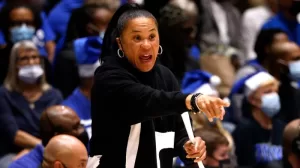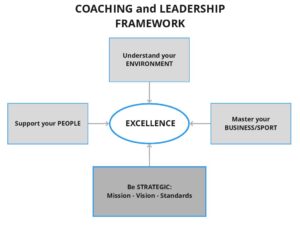
The NCAA Men’s and Women’s basketball tournament has shown us that we are living in the age of “change” in college sport. Transfer portals and the Name Image Likeness (NIL) opportunities for student athletes has altered the landscape of college sports, permanently. Certainly, some of the traditionally strong programs have pushed through to the Final Four on the women’s side, but in the men’s bracket the Final Four lacks a number one seed for the first time in history. The college basketball world has been turn upside-down.
Ultimately, I see this as the Era of Turbulence for the NCAA. A significant change like this tests the leadership ability of coaches.
Leading through turbulent times requires coaches to be:
- Crystal clear on their purpose and primary mission
- Strategic in the way they think and behave
- Committed to building and enhancing relationships
- And, able to adapt quickly and effectively
Turbulence applies pressure to our plans. In conflict and under pressure, individuals and programs require something to ground them. Something that reminds them what is most essential. The military is the leading light when it comes to the use of mission, purpose, and principles (the pillars of strategy), because lives are on the line. For college coaches, lives aren’t on the line, but having a clear understanding of why Kentucky or Yale has a women’s basketball program can help make the right decisions when the rules of engagement have changed.


I believe there are four components to coaching excellence: Master your Sport/Business, Understand your Environment, Support your People and Be Strategic. In my experience, the last component is the most difficult for coaches. Having a clear strategy in place is essential during times of change. It should be strongly aligned to the academic institution, regularly shared with others (staff, athletes, stakeholders) and easily assessed to determine effectiveness. The strategy that sat in the coaches’ head worked for many years, if not decades, but with young athletes better understanding their place and taking advantage of their rights and ability to influence, a robust plan is essential for every coach.
Where do you go when you are feeling pressure or managing a lot of moving parts? Often, we lean into those we have the strongest relationship with. Those we trust. Change, invariably, creates pressure, so people will perform better when they are in an environment based on care and trust. Today, a coach must be genuine and masterful in their ability to build relationships with all key “stakeholders”. Thus far, I have seen a number of unique moments during the tournament that suggested a strongly connection between athlete and coach. We may well be in the era of turbulence, but many coaches are also in the era of “relationships come first”. Time to jump on board!!


Adapt, or you are left behind. I think it is that simple for college coaches. But the ones, in my opinion, that will thrive in a sustainable way are those that adapt while staying committed to their core personal and program principles. This requires clarity, discipline and exceptional engagement and communication skills. In my mind, this balancing act is the essence of leadership.
Change is good. Change is hard. Understand your purpose, lean into relationships and be ready to adapt. Those that do, will thrive.




